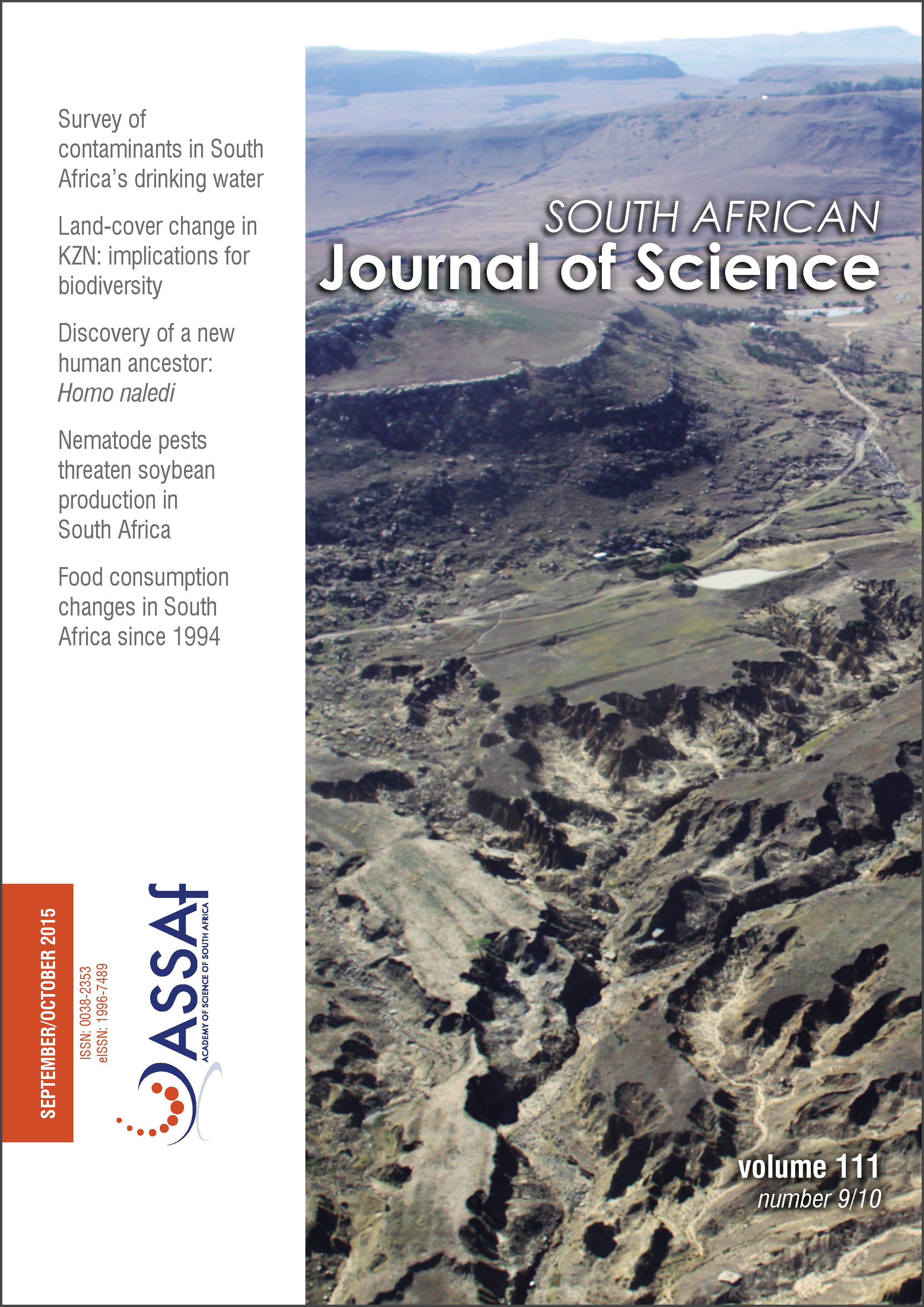Nematode pests threatening soybean production in South Africa, with reference to Meloidogyne
DOI:
https://doi.org/10.17159/sajs.2015/20140212Keywords:
host plant resistance, legume, molecular markers, plantparasitic nematodes, root-knot nematodesAbstract
The area planted to soybean in South Africa has increased by 54% since the 2009 growing season, mainly as a result of the increasing demand for protein-rich food and fodder sources. Moreover, the introduction of advanced technology, namely the availability of genetically modified herbicide tolerant soybean cultivars also contributed towards increased soybean production. The omnipresence of plant-parasitic nematodes in local agricultural soils, however, poses a threat to the sustainable expansion and production of soybean and other rotation crops. Meloidogyne incognita and M. javanica are the predominant nematode pests in local soybean production areas and those where other grain-, legume- and/or vegetable crops are grown. The lack of registered nematicides for soybean locally, crop production systems that are conducive to nematode pest build-ups as well as the limited availability of genetic host plant resistance to root-knot nematode pests, complicate their management. Research aimed at various aspects related to soybean-nematode research, namely, audits of nematode assemblages associated with the crop, identification of genetic host plant resistance in soybean germplasm to M. incognita and M. javanica, the use of molecular markers that are linked to such genetic resistance traits as well as agronomic performance of pre-released cultivars that can be valuable to producers and the industry are accentuated in this review. Evaluation of synthetically-derived as well as biological-control agents are also discussed as complementary management tactics. It is important that lessons learned through extensive research on soybean-nematode interactions in South Africa be shared with researchers and industries in other countries as they might experience or expect similar problems and/or challenges.
Published
Issue
Section
License

All articles are published under a Creative Commons Attribution 4.0 International Licence
Copyright is retained by the authors. Readers are welcome to reproduce, share and adapt the content without permission provided the source is attributed.
Disclaimer: The publisher and editors accept no responsibility for statements made by the authors
How to Cite
- Abstract 879
- PDF 835
- EPUB 220
- XML 253












.png)